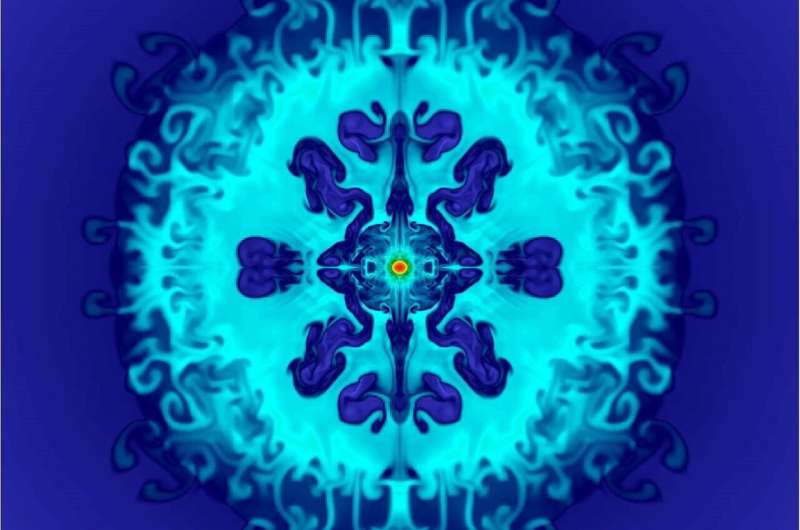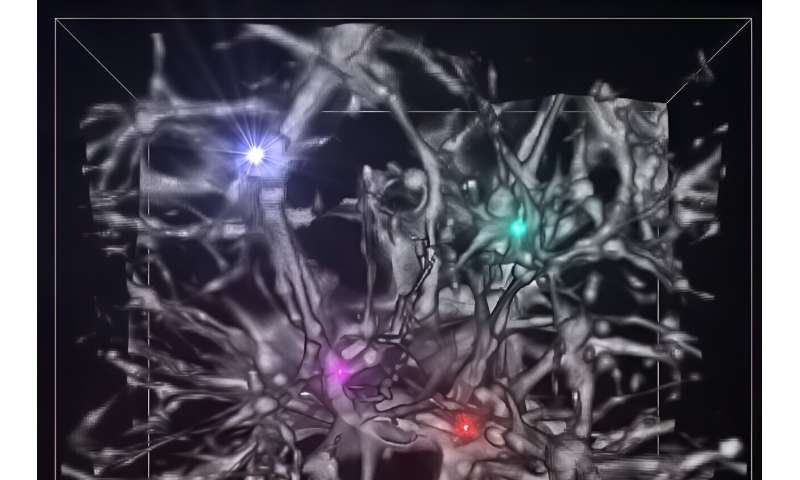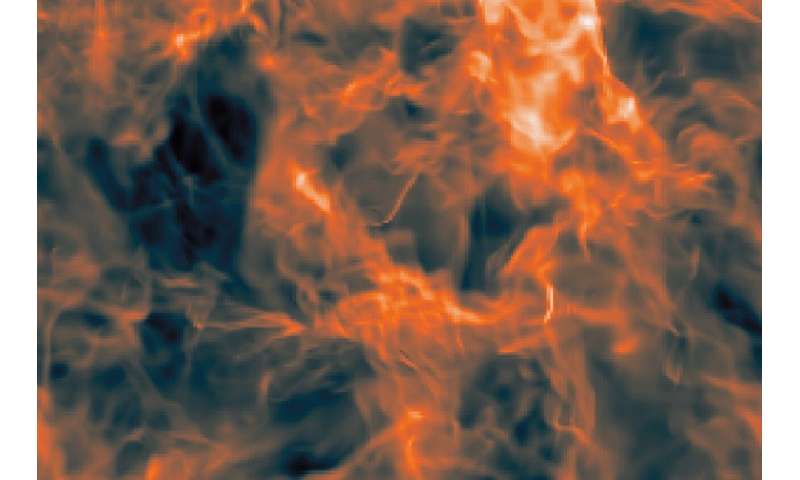This article has been reviewed according to Science X's editorial process and policies. Editors have highlighted the following attributes while ensuring the content's credibility:
fact-checked
peer-reviewed publication
proofread
Supercomputer simulations decode the mass puzzle of the first stars

Ching-Yao Tang and Dr. Ke-Jung Chen from the Institute of Astronomy and Astrophysics, Academia Sinica (ASIAA) have made substantial progress in decoding the birth mass of the first stars using the powerful supercomputer at Berkeley National Lab.
This new research is reported in the latest issue of the Monthly Notices of the Royal Astronomical Society.
During the earliest stages of the universe, only hydrogen and helium existed following the Big Bang, and crucial life-sustaining elements like carbon and oxygen had yet to emerge. Approximately 200 million years later, the first stars, known as Population III (Pop III) stars, began forming.
These stars initiated the production of heavier elements through nuclear burning at their cores. As these stars reached the end of their life cycles, some went supernovae, creating powerful explosions that dispersed newly synthesized elements into the early universe, becoming the foundation for life.
The type of supernova that occurs depends on the mass of the first star at its demise, resulting in different chemical abundance patterns. Observations of extremely metal-poor (EMP) stars, formed after the first stars and their supernovae, have been crucial in estimating the typical mass of the first stars. Observationally, the elemental abundance of EMP stars suggests that the first stars had masses ranging from 12 to 60 solar masses.
-

The image depicts the cosmological structure during the period of the first star formation about 200 million years after the Big Bang. The gray structures illustrate the distribution of dark matter when the first stars form within some dark matter halos. The colorful spots represent stars with various masses, providing a visual representation of the complex processes shaping the early universe. Credit: ASIAA/ Ke-Jung Chen -

During cosmic structure formation, primordial gas flows into the gravitational wells created by dark matter halos. As the inflowing gas converges at the halo center, it initiates a powerful turbulent motion. This intense turbulence acts to stir the cloud, giving rise to distinct clumpy structures, as depicted above. Ultimately, the dense cores within these clumps undergo gravitational collapse, marking the formation of the first stars. Credit: ASIAA/Ching-Yao Tang
However, previous cosmological simulations proposed a top-heavy and broadly distributed mass function for the first stars, ranging from 50 to 1,000 solar masses. This significant mass discrepancy between simulations and observations has perplexed astrophysicists for more than a decade.
Ching-Yao Tang and Ke-Jung Chen used the powerful supercomputer at Berkeley National Lab to create the world's first high-resolution 3D hydrodynamics simulations of turbulent star-forming clouds for the first stars. Their results indicate that supersonic turbulence effectively fragments the star-forming clouds into several clumps, each with dense cores ranging from 22 to 175 solar masses, destined to form the first stars of masses of about 8 to 58 solar masses that agree well with the observation.
Furthermore, if the turbulence is weak or unresolved in the simulations, the researchers can reproduce similar results from previous simulations. This result first highlights the importance of turbulence in the first star formation and offers a promising pathway to decrease the theoretical mass scale of the first stars. It successfully reconciles the mass discrepancy between simulations and observations, providing a strong theoretical foundation for the first star formation.
More information: Ching-Yao Tang et al, Clumpy structures within the turbulent primordial cloud, Monthly Notices of the Royal Astronomical Society (2024). DOI: 10.1093/mnras/stae764
Journal information: Monthly Notices of the Royal Astronomical Society
Provided by ASIAA



















